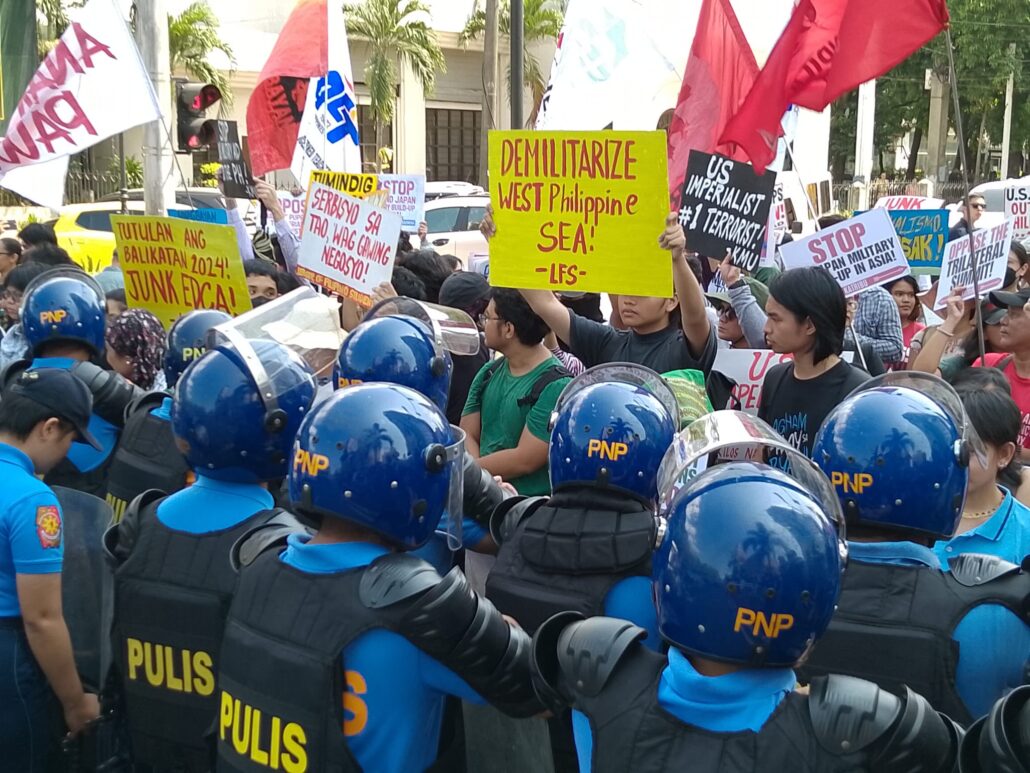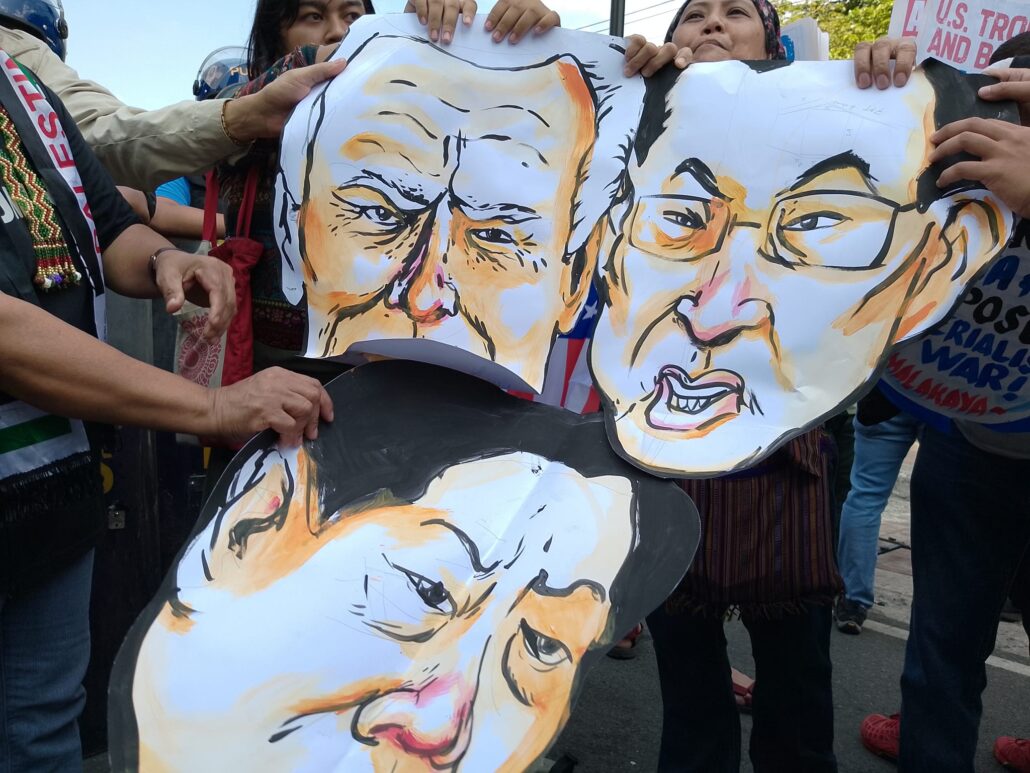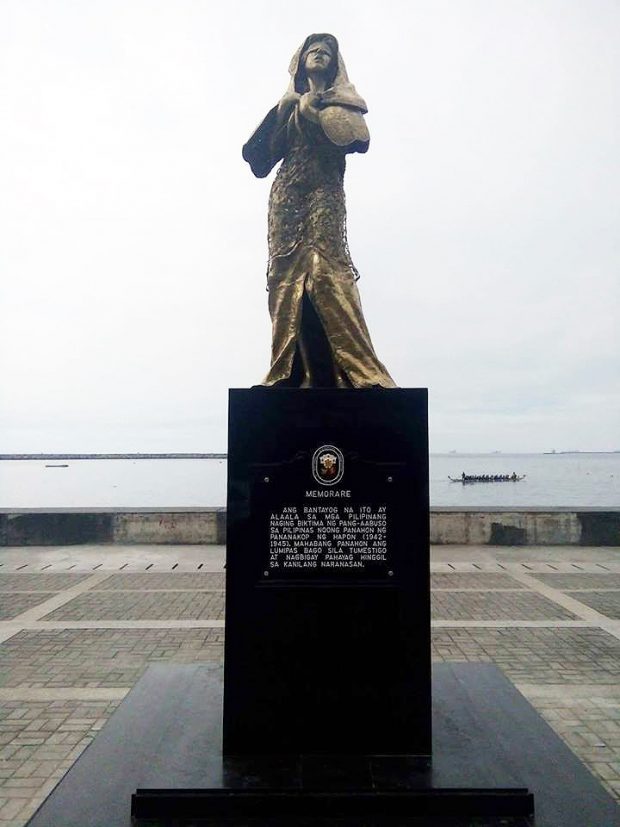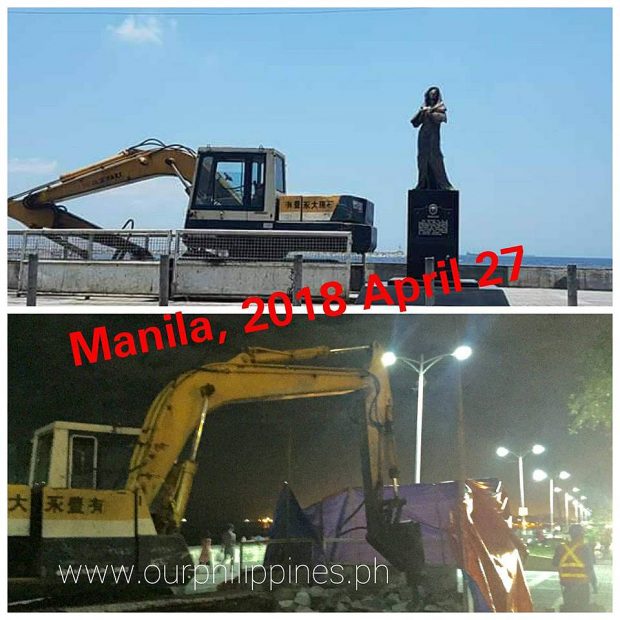Balikatan 2024: Para kanino?
Ni Nuel M. Bacarra
Lagi’t laging target ng mga mananakop na paluhurin ang Pilipinas sa dayuhang kapangyarihan. Mula sa panahon ng kolonyalistang Español na nagbunsod ng Rebolusyong Pilipino noong 1896, sumunod ang mga nagpabalik-balik na mga Amerikano na bantog sa mga masaker at gera sa umpisa pa lamang ng siglong 1900 at ng mga Hapones naman noong Ikalawang Digmaang Pandaigdig.
Ang estratehikong lokasyon ng Pilipinas sa pandaigdigang istruktuta ng kapangyarihan (o geopolitics) at ang taglay nitong rekurso sa kalupaan man o sa karagatan ay mga panghikayat sa mga mananakop para sa pamalagiang presensya nila para sa direkta o di-direktang pananakop sa bansa. Hanggang ngayon, ang pagiging malakolonyal na katangian ng Pilipinas sa ilalim ng imperyalismong US ang ginagamit ng huli para tuluyang lubusin ang kontrol nito sa bansa.
Ang patuloy na paghahamon ng gera ng US sa China para igiit ang hegemonya nito ay kumakaladkad sa Pilipinas sa isang napipintong digmaan sa pagitan ng mga imperyalistang bansang ito.
Nagpakana ng “tulungan” ang US upang hinangin ang garantiya ng Pilipinas sa pang-uupat ng gera sa China bilang piyon. Nangyari ang pulong nitong Abril 11 sa Washington D.C., US kabilang ang Japan bilang katuwang ng US. Tinawag itong Trilateral Summit ng US, Japan at Pilipinas.
Magkakaanyo ang tulungang ito sa pamamagitan ng mga mapanghamong ehersisyong militar o “Balikatan”, paglalayag ng mga barkong pandigma ng iba’t ibang bansa sa exclusive economic zone (EEZ) ng Pilipinas at maging lampas pa sa teritoryal na saklaw ng bansa, ng pagtambak ng mga dayuhang armadong tropa at mga armas at kagamitang pandigma.
Ang anumang pang-ekonomyang kasunduan ng tatlong bansa tulad ng mga proyektong pang-imprastruktura gaya ng Luzon Corridor, proyektong sa teknolohiya, pagharap sa problemang pangkapaligiran at enerhiya ay nilalambungan ng tunay na layon nito na tugunin at harapin ang China na naggigiit ng soberanya nito sa West Philippine Sea (WPS) at kinakikitaan umano ng mapanganib at agresibong gawi rito. Ito ay mga proyekto na inihahanda para sa gera.
Agresibong Balikatan
Bago pa ang Trilateral Summit, pinagtibay na ng US at ni pangulong Ferdinand Marcos Jr. noong isang taon ang Bilateral Defense Guidelines na nagpapahintulot sa US na makialam hindi lamang sa Pasipiko kundi maging sa West Philippine Sea. Pinahihintulutan din nito ang pakikialam ng US sa panloob na seguridad at depensa sa ngalan ng paglaban sa “terorismo”.
Samantala, nitong Abril 22, pormal na sinimulan ang Balikatan ng US at Pilipinas. Isa ito sa pinakamalaki sa kasaysayan ng mga ehersisyong militar na kasasangkutan ng 16,000 tropa. Kasangkot din ang 150 sundalo mula sa Australia habang paglalayagin ng Pransiya ang kanilang barkong pandigma sa loob ng EEZ ng Pilipinas habang may 14 pang bansa ang makikisangkot bilang tagamasid.

Sa pahayag ni Col. Michael Logico, tagpagsalita ng Balikatan 2024, kaugnay sa ehersisyong militar na tatagal hanggang Mayo 10, aniya: “Ang dahilan kaya naglulunsad tayo ng mga ehersisyo ay upang ipakita ang ating kahandaan sa labanan. Pagpapakita rin ito ng ating komprehensibong konsepto ng depensang pangkapuluan.” Dagdag pa niya, “Ginagawa natin ang mga ehersisyo sa pangunahing dahilan na magmantine ng isang mataas na antas ng kahandaan.”
Katawa-tawa ito dahil ang pinaghahandaang gera ay hindi natin laban kundi digmang isinasalaksak sa mamamayan ng among imperyalismong US na siyang may napakalaking interes na digmain ang China sa usapin ng ekonomya at panatilihin ang sarili bilang nangungunang imperyalistang superpower sa mundo. Ang sinasabing kahandaan ay isang usok na pangarap dahil ang lakas ng isang bansa sa usapin ng depensa ay nakabatay sa lakas ng lokal na ekonomya at hindi sa pag-asa sa tulong ng dayuhan. Ang lokal na ekonomya ng Pilipinas na nakabatay sa pag-angkat ng mga batayang pangangailangan kailanman ay di makapagsusustine ng gera. Isusubo ang mga sundalong Pilipino sa isang digmaang nasa kumpas ng imperyalismong US. Ang buong bansa ay magiging base militar muli ng US para sa sarili nitong interes, at hindi ng mamamayang Pilipino.
Ang kontra-insurhensyang programa ng gubyerno mismo ay bigo laban sa mga rebolusyonaryong pwersa. Bigo ang itinakdang paglansag sa mga larangang gerilya ng New People’s Army (NPA) na diumano ay dapat mangyari sa unang kwarto ng taon at durog na diumano sa katapusan ng Hunyo ang mga bertikal na pormasyon nito habang lulusawin ang lahat ng komiteng rehiyon ng Partido Komunista ng Pilipinas bago matapos ang taon.
Sa 39 na ehersisyong militar mula 1991, ang Philippine Coast Guard ay lalahok sa kauna-unahang Multilateral Maritime Exercise ng Balikatan. Ang Balikatan ay gaganapin sa Luzon at Palawan na katatampukan ng pagpapalubog ng barko at una rin ito sa mga ehersisyong militar na lalampas sa 12 nautical miles na teritoryal na hangganan ng Pilipinas.
Bangkaroteng patakarang panlabas
Ayon mismo sa rehimeng Marcos Jr., ang patakarang panlabas ng Pilipinas ay nangangailangan ng pagbalanse sa China at sa US. Sinasaklaw ng China ang bahagi ng West Philippine Sea (WPS) habang pabor ang rehimen sa malaya at hayag na pananaw ng US sa Indo-Pasipiko.
Kung ito ang susundan, sinusunod ng rehimen ang kapritso ng US sa pagtatayo ng mga base militar sa bansa at sa pagsasagawa ng mga ehersisyong militar para sukatin ang kakayanan ng China gamit ang Pilipinas. Mapanganib ito sa bansa dahil inilalarga ng US ang mga balak nito gamit ang ating kalupaan at karagatan na nagsasapeligro sa Pilipinas sa isang gerang di naman natin ginusto.
Sa kasalukuyang galaw ng rehimeng Marcos Jr, lantad ang kiling nito sa imperyalismong US at sa kongkretong pagdalo sa trilateral summit at sa mga nakakasang Balikatan sa bansa hindi dahil gusto nitong isabak ang bansa sa isang gera bilang piyon ng US o bilang pagsalungat sa dating pangulong Rodrigo Duterte na itsurang maka-Tsiina.
Nangunguyapit ang rehimeng Marcos Jr. sa US na bukod pa sa pinakamalakas na kapangyarihan ito sa mundo sa usapin ng ekonomya at militar, nais niyang iparating sa buong mundo na nalinis na ang pangalan ng mga Marcos na dating bantog sa daigdig bilang pasistang diktador at mandarambong dahil sa pagkandili sa kanya ng US.
Nilalabag din ng rehimeng Marcos Jr. ang probisyon sa Konstitusyon sa Artikulo II, Seksyon 7 kaugnay sa independyenteng patakarang panlabas na dapat binibigyang kahalagahan sa pakikipagrelasyon sa ibang estado ang pambansang soberanya, teritoryal na integridad, pambansang interes at karapatan sa pagsasarili. Ang pagbibigay-kaluwagan sa mga pagtatayo ng mga base militar ng US sa ilalim ng Enhanced Defense Cooperation Agreement o EDCA ay taliwas sa probisyong ito dahil walang hurisdiksyon ang Pilipinas sa mga base military o sa mga sundalong dayuhan.
Dagdag pa rito, ang mga haligi diumano ng patakarang panlabas ng Pilipinas ay ang pagpapaunlad ng pambansang seguridad, ang pagkakamit ng pang-ekonomyang seguridad at ang proteksyon sa mga karapatan, kagalingan at interes ng lahat ng Pilipino sa ibayong dagat. Hindi pagpapaunlad ng pambansang seguridad ang presensya ng sundalo ng US sa bansa na mananatili sa mga base militar ng US habang hindi interes ng mamamayan ang kagutuman, kawalang-hanapbuhay, mababang sahod, mataas na presyo ng mga produktong petrolyo na sanhi ng pagtaas din ng batayang bilihin at iba pa. Ito ang mga saligang usaping dapat kinukompronta ng rehimeng Marcos Jr.
Sa mga insidente ng pagiging agresibo ng China sa WPS kontra sa mga Pilipinong Coast Guard na ilang beses nang binomba ng tubig para itaboy at sa huling pangyayari ay mga nasugatan, lumalabas ngayon na tila may sinandalang pader ang rehimeng Marcos Jr. dahil sa Trilateral Summit ng US, Japan at Pilipinas. Ang dalawang imperyalistang kapangyarihan na dating nangolonya sa bansa ay pinapalabas na kapanalig ngayon ng Pilipinas.
Samantala, mahigit 70 kasunduan sa depensa ang naisara ng Japan sa US. Kabilang dito ang network ng missile defense system. Magsiserbisyo din ang Japan sa mga barko ng US sakaling may mga kailangang kumpunihin. Gayundin, ang mga diplomatikong kasunduan ng Japan at Pilipinas kaugnay ng magkatugong akses sa mga base militar ay dapat mapagkasunduan. Nangangahulugan ito ng papayagan ng Pilipinas ang mga pwersang militar ng Japan sa mga base militar ng Pilipinas.
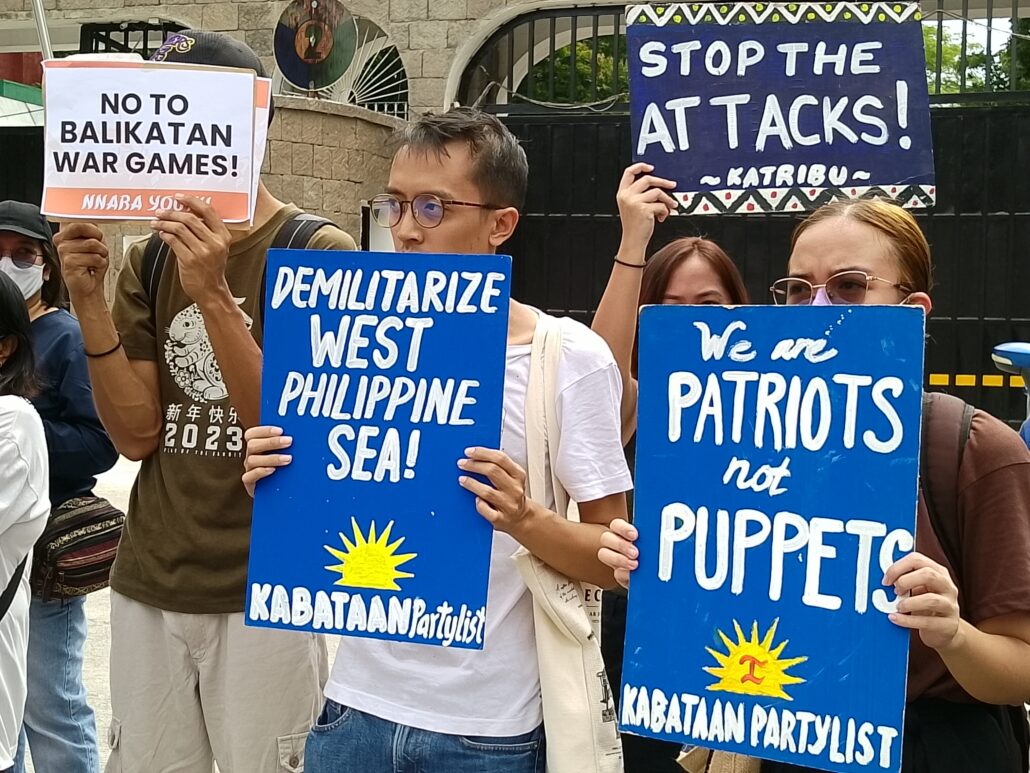
Sa huli, sa mga ganitong kasunduan, lagi’t laging todo-bigay ang Pilipinas sa kapritso ng mga dayuhan. Pwedeng makialam ang mga dayuhan sa internal na usapin ng bansa. Sa kasaysayan ng mga base militar, hindi makatutuntong ang mga Pilipino sa mga baseng ito na nakatirik sa kalupaan natin.
Nasa estratehikong lokasyon ang pakat ng mga base militar ng US sa ating bansa. Pawang nakapakat ito laban sa China. Isusubo ng imperyalismong US ang Pilipinas bilang pambitag sa China. Imperyalistang bansa rin China na may kakayanang makipaggera at may napakalakas at matatag na ekonomya.
Ang Trilateral Summit ng US-Japan at Pilipinas kung gayon ay kapulungan ng mga imperyalista bansa sa presensya ng isang tutang estado. Wala itong pakinabang sa mamamayan, kung kaya marapat na tutulan at wakasan ng mamamayang Pilipino. #

